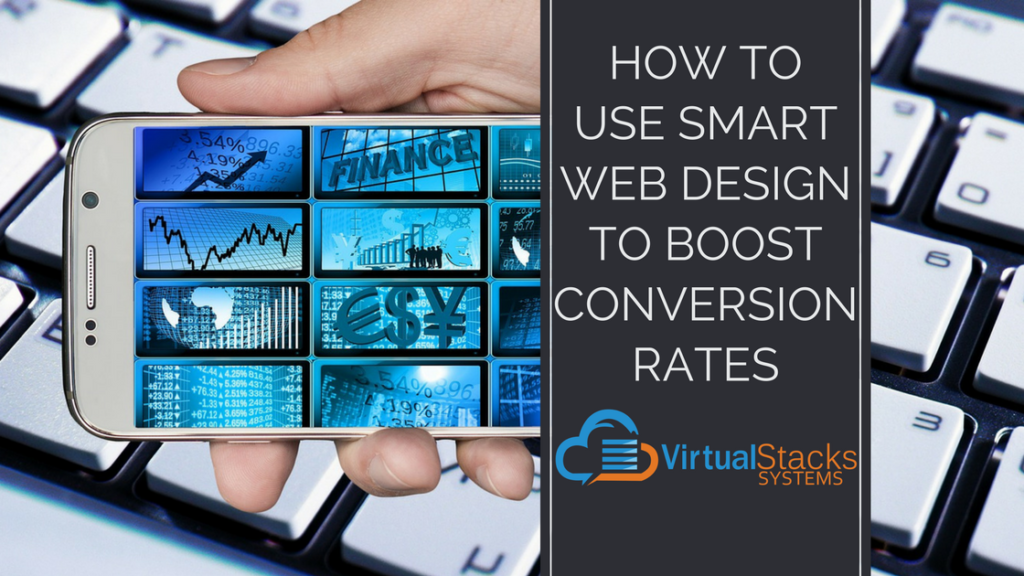
23 Apr Using Smart Web Design to Boost Your Conversion Rates
There’s an old saying, “All dressed up and nowhere to go.” The pitiful image this evokes all too often applies to websites that seem appealing to the eye, but fail to convert visitors to customers. If your company’s website was designed or redesigned with the main goal of maximizing traffic – with the assumption that more eyeballs would result in more sales – you may be wondering what went wrong. Unfortunately, increased traffic has no value if most of those visitors leave without taking the first step into the conversion funnel by downloading your informative white paper, or completing a transaction. Conversion web design makes the difference between a website that boosts conversion rates and your bottom line, and one that may actually be working against you.
Web design that drives conversion rates and sales begins with a fundamental understanding of your website’s purpose. No matter what you’re selling or how you’re selling it, keep in mind that your website is a sales tool – not just a fancy online brochure. Working from this premise, you can begin to see the design and performance elements necessary to build a website that does the heavy lifting.
Also keep in mind that people are now more likely to access your site from a mobile device than a laptop or desktop computer – which means that every element on every page needs to work smarter and harder.
We went into detail about the importance of website design to conversion rates in one of our recent posts, How to Tell if Your Website Needs a Redesign.
To elaborate, here are a few design principles that help improve conversions.
Limit the number of choices that visitors to your site have – As reported by Barry Schwartz in Harvard Business Review, a landmark study was conducted by psychologists Sennea Iyengar and Mark Lepper in 2000. An excerpt from Schwartz’s report follows.
“On one day, shoppers at an upscale food market saw a display table with 24 varieties of gourmet jam. Those who sampled the spreads received a coupon for $1 off any jam. On another day, shoppers saw a similar table, except that only six varieties of the jam were on display. The large display attracted more interest than the small one. But when the time came to purchase, people who saw the large display were one-tenth as likely to buy as people who saw the small display.”
This behavior demonstrates Hick’s Law – named after British psychologist William Edmund Hick – which states that the time it takes for an individual to make a decision is directly proportionate to the possible choices that person has. In this case, action was lost in proportion to the number of jam varieties being presented. In the case of your website, limit the number of decisions that a visitor has to make in order to take the action you intend.
Have a strong visual call to action – If you’re doing inbound marketing and want visitors to download a case study, white paper, infographic, etc., make sure the download button is easy to see, and related graphics and text deliver a strong message instead of visually blending in with other text, graphics and photos. While text-heavy CTAs discourage action, those erring on the minimalist side may provide too little motivation for a potential lead to click.
For ecommerce sites, avoid a cluttered appearance – A common mistake is feeling the need to put as much information – photos, descriptions, etc. – as possible on the page. However, this often has the opposite effect, with visitors unable to cut through the clutter and giving up. Go for a clean layout, with large product images and clearly stated features and benefits.
Follow the 8 second rule – Yes, studies have shown that you have only eight seconds to get a visitor’s attention. Use the limited time wisely by using a benefit-driven headline, the previously-mentioned strong CTA and – if possible and highly recommended – video content.
State your value proposition – Why should visitors want to download your white paper? Use power words and tell visitors how your white paper will help them do business better – how they’d be missing out on tips and insights for getting the competitive edge if they don’t. Of course, for this insight, they enter your conversion funnel, taking the first step in allowing you to build a relationship that will hopefully result in gaining their business. Assuming your white paper – and your company – lives up to its value proposition, you’ll increase your chance for them to say yes!
Make it fast! – Also as discussed in our February 28, 2018 blog post, The Importance of Getting Your Website Up to Speed, Google’s engineers have found that potential customers will visit a site less often if it’s slower than that of a close competitor’s by more than 250 milliseconds. According to a study by the Aberdeen Group, a one-second delay in page load time results in a 7% reduction in conversions.
We’ve only scratched the surface on web design to boost conversions. And again, the recent dominance of mobile is changing the game as we read these words. Our web design team at Virtual Stacks Systems is at the forefront of these rapid developments, ready to incorporate them into a website that can help your business reach its sales and growth objectives. Contact us to learn more.
